Click below to listen to my 2 min. Garden Bite radio show: Rain gardens

Some folks asked what plants work well in raingardens. From marshes to savannas to dry prairies, there are some wonderful choices. You need to know what your sun/shade conditions will be and your climate zone. Follow this link for a list of many plants for various sites: University of Minnesota Extension

As a primer, native plants work best, lots of grasses are good choices too including Big and Little Bluestem, tall manna grass for lakeside and lots of sedges which will tolerate partial shade.
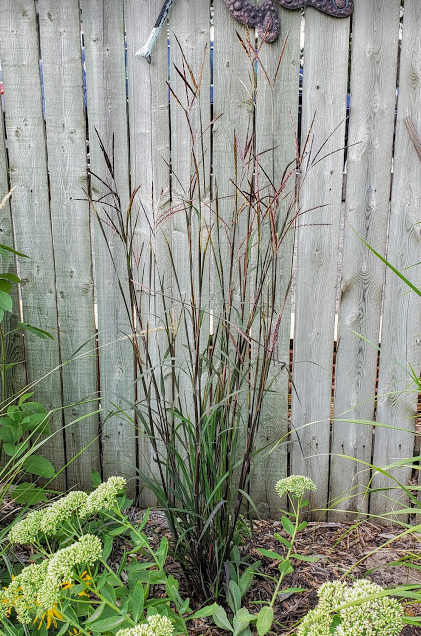
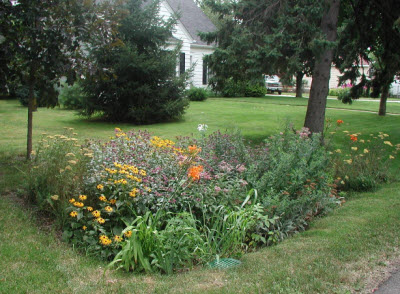
Fragrant hyssop, agastache, is a prairie perennial that will grow to 40 inches tall and blooms June through October, an absolute bee, butterfly and bird magnet!
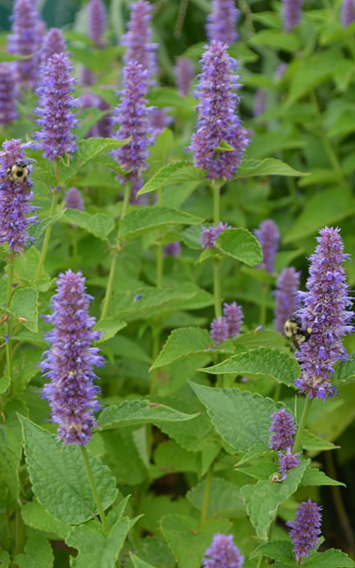
Canada anemone and New England aster are wonderful choices for part shade, attract butterflies and offer successive bloom times. That means flowers from May through October!


Boltonia asteroides is a late blooming swamp to prairie perennial that can grow from 4 feet to nearly 7 feet tall. It’s blooms look like small daisies but they’re profuse!
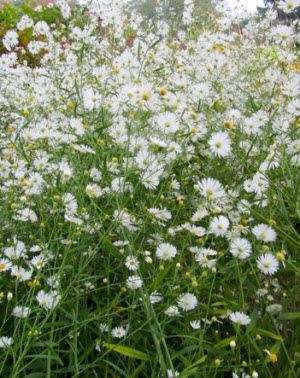
One cultivar is named ‘SnowBank’, very appropriate.
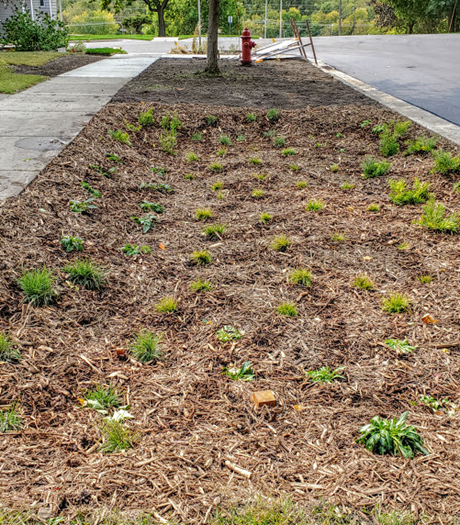
This is my plant list and schematic: rain garden plants and schematic
- Butterfly weed
- Brown fox sedge grass
- Purple coneflower
- Cardinal flower
- Carousel little bluestem
There are some wild statistics about the amount of runoff that cascades off our roofs and into our storm sewers too.
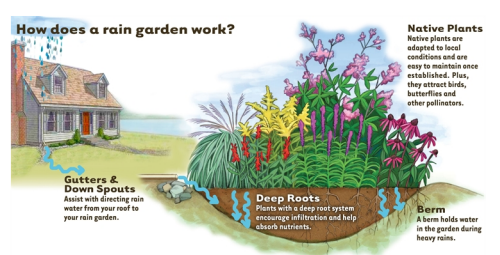
Rain gardens prevent much of that runoff allowing the water to soak into the soil, get cleansed as it passes down and then helps to fill our aquafirs. To learn more about rain gardens I urge you to check out the Blue Thumb Guide to Raingardens. This is a FANTASTIC resource for those of us in northern climates.
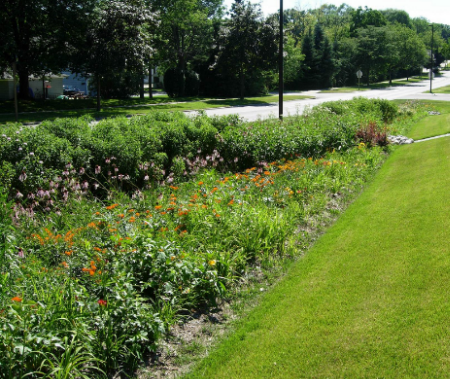
Additional information at Capital Region Watershed District

